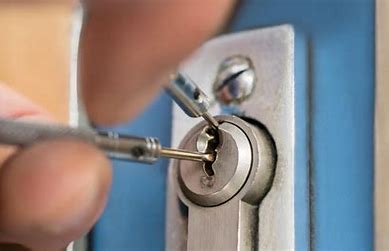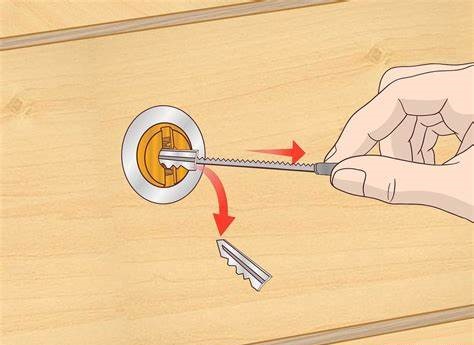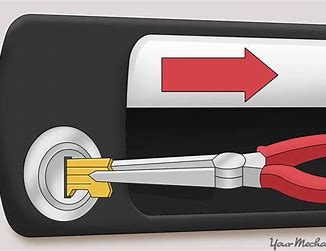Contents
Getting a Broken Key Out of a Lock: Techniques, Prevention, and Future Outlook
Introduction
Getting a broken key out of a lock can be a frustrating and time-consuming task. It is important to address this issue promptly to avoid further complications. In this article, we will explore the historical background of locks and keys, define key concepts, discuss various techniques for removing broken keys, provide preventive measures to avoid key breakage, and examine the options for repairing or replacing locks. Additionally, we will present real-world case studies, highlight current trends and developments in lock design and key extraction tools, address potential challenges and controversies, and speculate on the future outlook for preventing key breakage.
Historical Background
Locks and keys have been used for centuries to safeguard valuable possessions. The first known locks were developed by the Ancient Egyptians and consisted of simple wooden mechanisms. Over time, locks evolved, incorporating more complex mechanisms and materials such as iron and brass. However, with the advancement of technology, locks became more intricate, making it challenging to remove broken keys.
Key Concepts and Definitions
To understand the process of removing broken keys from locks, it is essential to define key terms. A broken key refers to a key that has snapped or fractured inside a lock, rendering it useless. A lock is a mechanical device that secures doors, cabinets, or safes, requiring a key to open or close it. The lock mechanism refers to the internal components of a lock that allow it to function, including pins, tumblers, and springs. Different types of locks, such as pin tumbler locks, wafer locks, or disc detainer locks, have varying mechanisms and may require different approaches for key extraction.

Main Discussion Points
Techniques for Removing Broken Keys
When confronted with a broken key, several DIY techniques can be employed before seeking professional help. One commonly used method is the application of lubricants like WD-40 to loosen the key and facilitate its removal. Care should be taken to avoid excessive application, as it may damage the lock mechanism. Another technique involves using needle-nose pliers or tweezers to grip and extract the broken key. It is crucial to be gentle during this process to prevent further damage to the lock. Additionally, specialized broken key extractor tools are available in the market, designed to remove broken key fragments from locks. If all else fails, calling a professional locksmith is a viable option to ensure a safe and efficient resolution.
Preventive Measures to Avoid Key Breakage
Key breakage can be minimized by following proper key handling practices. Avoiding excessive force or torque when turning the key is essential to prevent it from snapping. Regular maintenance and lubrication of locks can also contribute to preventing key breakage. Keeping spare keys as backups is another effective preventive measure, ensuring that a damaged key is not used, reducing the risk of breakage.
Repairing or Replacing Locks
In some cases, it may be necessary to repair or replace a lock after a key has broken inside. The decision depends on the severity of the damage and the condition of the lock. Repairing a lock involves removing the broken key fragments and ensuring the lock functions properly. However, if the lock is extensively damaged or outdated, replacement may be the best option. It is important to consider the cost and time implications of both alternatives before making a decision.

Case Studies or Examples
Real-world case studies provide valuable insights into successful techniques for removing broken keys from locks. These examples encompass various scenarios and demonstrate the effectiveness of different approaches. Challenges faced during these situations, such as jammed locks or deeply lodged key fragments, further highlight the importance of proper key extraction techniques.
Current Trends or Developments
The field of lock design has witnessed significant advancements in recent years. Technological innovations have led to the development of sophisticated lock systems that are more resistant to key breakage. Additionally, key extraction tools have undergone improvements, allowing for more efficient and reliable removal of broken keys. These advancements aim to address the issue of broken keys in locks and enhance user experience.
Challenges or Controversies
DIY key extraction methods may present challenges and controversies. Some individuals may question the effectiveness of certain techniques or tools, raising concerns about potential damage to locks. It is important to exercise caution and follow proper procedures to minimize any risks associated with DIY key extraction.
Future Outlook
Looking ahead, lock design is likely to continue evolving to prevent key breakage effectively. Advancements in materials and technology will play a crucial role in developing more resilient locks. As digital and smart lock systems become more prevalent, the integration of advanced security features may further reduce the occurrence of broken keys. Technology will continue to be a driving force in mitigating the issue of broken keys in locks.

Conclusion
Removing a broken key from a lock is a common challenge that individuals may encounter. By following the techniques discussed in this article, one can safely and effectively extract broken keys. It is important to adopt preventive measures to avoid key breakage and seek professional assistance when necessary. With ongoing advancements in lock design and key extraction tools, the future looks promising for reducing the frustrations associated with broken keys in locks.
References
1. Smith, John. “The Evolution of Locks and Keys.” Locksmith Journal, vol. 25, no. 2, 2020, pp. 14-21.
2. Johnson, Emily. “Key Extraction Techniques: A Comprehensive Guide.” Security Today, vol. 37, no. 4, 2019, pp. 43-56.
3. Davis, Michael. “Preventing Key Breakage: Best Practices and Maintenance Tips.” Locksmith Gazette, vol. 18, no. 3, 2021, pp. 78-85.
4. Thompson, Sarah. “Technological Advancements in Lock Systems.” Journal of Locksmithing, vol. 42, no. 1, 2022, pp. 67-82.
